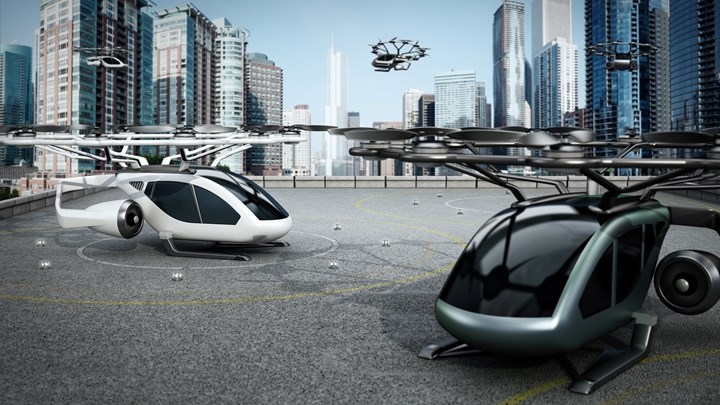Research predicts first commercial eVTOL passenger routes, applications
A new survey commissioned by Horizon Aircraft asked 100 professionals when they think the first UAM passenger routes will be operational, and what uses would be considered the most practical.
A new survey amongst private equity and venture capital professionals reveals 41% believe the first urban air mobility (UAM) passenger routes will be operational within the next two years. The study was commissioned by Horizon Aircraft Inc. (Toronto, Ont., Canada) a company developing its own hybrid-electric vertical takeoff and landing (VTOL) aerial vehicles. Conducted online in November 2022, survey respondents were based in the U.S., Canada, U.K., Australia, New Zealand, China, Hong Kong, Germany and the United Arab Emirates (UAE).
|
The year in which surveyors believe the first UAM passenger routes will be operationl |
Survey responses |
|
2023 |
14% |
|
2024 |
27% |
|
2025 |
28% |
|
2026 |
12% |
|
2027 |
7% |
|
After 207 |
10% |
|
Don’t know |
2% |
When it comes to what the first practical use of piloted eVTOL aircraft will be, 27% said search and rescue, followed by 20% who said remote supply, 15% for organ transport and 14% for passenger transport. Cargo transport, disaster relief, military missions and medevac applications were 8%, 8%, 4% and 3%, respectively.
Overall, 93% of those questioned believe that the growing global demand for better and more efficient transportation systems, the increasing number of vehicles operating on the roads causing serious environmental impact and advances in technology improving the safety and viability of eVTOLs, will result in a rapidly improving regulatory environment for the eVTOL market over the next five years, and fuel substantial investment in the sector.
When asked to select which five countries that will have the biggest and most advanced eVTOL markets in 2030, 59% cited the U.S., 52% said Canada, 41% the U.K., 37% France and 35% highlighted China.
“Our research highlights the variety of ways in which eVTOLs can be used — from search and rescue to remote supply, passenger transportation and military missions,” Brandon Robinson, CEO of Horizon Aircraft, says. “This is one of the key reasons why the sector is attracting so much investment, and it will be those aircraft that can be used for multiple purposes that will attract much of this financing.”
Horizon Aircraft, and its flagship Cavorite X5 design, has been reportedly attracting significant interest from within the industry having won several grants, a U.S. Department of Defence advanced research and development (R&D) contract award and the fact that its large-scale prototype is already flying. The composites-intensive aicraft is currently running rigorous flight testing of its 50%-scale prototype while continuing to develop a detailed design of a full-scale aircraft (read “Horizon’s Cavorite eVTOL prototype completes initial hover testing”).
For related resources, see “Composites opportunities in eVTOLs.”
Related Content
-
TU Munich develops cuboidal conformable tanks using carbon fiber composites for increased hydrogen storage
Flat tank enabling standard platform for BEV and FCEV uses thermoplastic and thermoset composites, overwrapped skeleton design in pursuit of 25% more H2 storage.
-
Paris Air Show 2023 highlights
The Paris Air Show, one of the largest aerospace trade shows in the world, returned for the first time since 2019 and proved that the global aviation industry industry is very much alive and kicking.
-
Syensqo becomes new Solvay specialty materials company
Syensqo represents what was Solvay Composite Materials, focused on delivering disruptive material technologies and supporting growing customer needs.

















